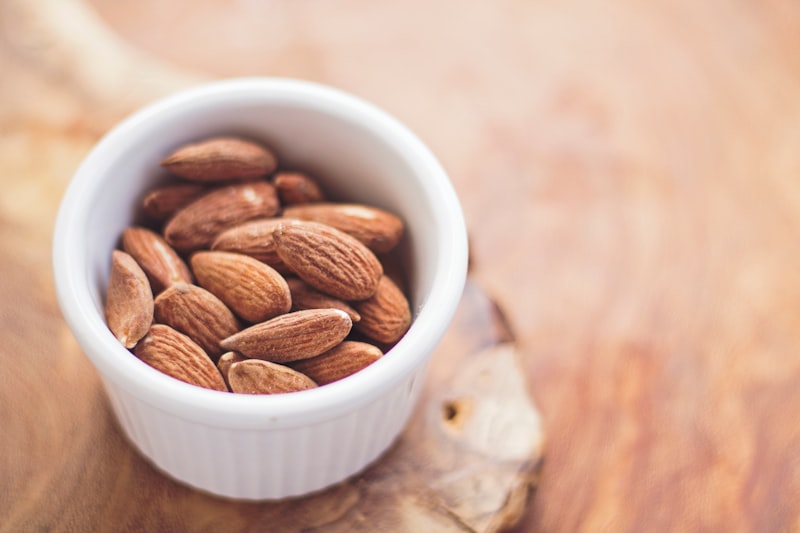Introduction: Food is not just a means to satisfy our hunger; it also holds the power to captivate our taste buds and nourish our bodies. But have you ever wondered about the intricate relationship between food and science? This captivating dance between two seemingly different domains unveils a world of exploration, discovery, and innovation. In this article, we dive into the depths of the fascinating connection between food and science, unearthing the ways in which scientific advancements shape the food we eat.
Understanding Flavor Chemistry: At the heart of the union between food and science lies flavor chemistry – the study of the chemical processes that occur during cooking and how they impact taste. It explores the complex interactions of molecules within ingredients, unlocking the secrets behind the perfect balance of flavors. From the Maillard reaction that gives bread its enticing aroma to the delicate harmony of sweet and sour in a lemon meringue pie, flavor chemistry allows us to understand the magic happening on our plates.
Nutrition and Health Sciences: Science also plays a vital role in unraveling the mysteries of nutrition and health. Researchers delve into the composition of various food groups, analyzing nutrients, vitamins, and minerals that contribute to our well-being. Through scientific studies, we gain insights into the effects of different diets on our bodies, the benefits of superfoods, and the potential risks of certain ingredients. Armed with this knowledge, we can make informed decisions about what we consume, promoting overall wellness.
Food Technology and Innovation: Advancements in science have revolutionized the way we grow, prepare, and preserve our food. Food technology has paved the way for innovative methods such as genetic engineering, enabling improved crop yields and resistance to pests. Moreover, techniques like freeze-drying and canning prolong the shelf life of food, reducing waste and increasing accessibility. By leveraging science, we can tackle the global challenge of feeding a growing population sustainably.
Conclusion: The interconnectedness of food and science goes far beyond the kitchen. It intertwines with our health, enjoyment, and the future of our planet. Through flavor chemistry, nutrition research, and food technology, science continues to shape the way we experience food. So, the next time you sit down for a meal, take a moment to appreciate the remarkable journey that brings that plate of goodness to your table – a symphony conducted by the harmonious collaboration of food and science.
Revolutionary Breakthrough: Scientists Uncover the Secrets to Creating Healthier Fast Food Options
Are you tired of feeling guilty every time you indulge in fast food? Well, hold on to your seats because scientists have just made a groundbreaking discovery that could revolutionize the way we perceive fast food. In a recent study, researchers have uncovered the secrets to creating healthier options that still satisfy our taste buds.
So, what exactly are these secrets? It turns out that the key lies in ingredient manipulation and cooking techniques. By using innovative approaches, scientists have found ways to reduce unhealthy components like saturated fats, sodium, and sugar, while maintaining the delicious flavors we all crave.
One of the strategies employed involves substituting unhealthy fats with healthier alternatives. Traditional deep-frying methods often use oils high in saturated fats, which can contribute to various health issues. However, researchers have developed new frying techniques that utilize healthier oils, such as avocado or olive oil. This not only reduces the overall fat content but also adds beneficial nutrients to the food.
Another remarkable breakthrough revolves around reducing excessive sugar levels. We all know how detrimental excessive sugar consumption can be to our health. To combat this issue, scientists have come up with innovative ways to enhance the natural sweetness of ingredients without adding extra sugar. Through meticulous experimentation, they have discovered certain combinations of spices, herbs, and extracts that create an illusion of sweetness, tricking our taste buds into thinking we're indulging in a sugary treat when, in fact, we're not.
Additionally, scientists have delved into the realm of food engineering, focusing on enhancing texture and mouthfeel to make healthier options more enjoyable. They've explored the incorporation of plant-based proteins, whole grains, and fiber-rich ingredients to increase the nutritional value of fast food items. By doing so, they not only boost the healthiness factor but also provide a satisfying eating experience.
Imagine walking into a fast food restaurant and knowing that you can make choices that won't compromise your health. Thanks to these groundbreaking discoveries, this dream might become a reality sooner than we think. With ongoing research and collaboration between food scientists and the fast food industry, we can look forward to an era where healthier options are readily available and just as mouthwatering as their less nutritious counterparts.
The quest for creating healthier fast food options has taken a significant leap forward with the recent breakthroughs by dedicated scientists. These culinary innovators have unlocked the secrets of reducing unhealthy ingredients, manipulating flavors, and enhancing textures to give us guilt-free indulgence. The future of fast food is looking brighter than ever, promising a blend of taste, convenience, and improved well-being. So, get ready to savor the savory delights of health-conscious fast food - a revolution that will transform the way we enjoy our favorite guilty pleasures.
From Lab to Plate: The Fascinating World of Molecular Gastronomy and its Impact on Fine Dining
Imagine a culinary experience where science meets art, where flavors are transformed into unexpected textures, and where dishes are created using cutting-edge techniques. Welcome to the captivating domain of molecular gastronomy, an innovative approach that has revolutionized the world of fine dining.
What exactly is molecular gastronomy? It's a scientific discipline that explores the physical and chemical transformations of ingredients during cooking. By applying principles from physics and chemistry, chefs can manipulate food at a molecular level to create mind-bending creations that tantalize both the palate and the eye.
In this fascinating world, traditional cooking methods take a back seat as novel techniques like spherification, foams, and gels come into play. For instance, spherification involves transforming liquids into delicate spheres that burst with flavor when consumed. Think of biting into a seemingly solid ball of liquid that releases a burst of intense taste—a truly surprising experience!
One of the most well-known pioneers of molecular gastronomy is Ferran Adrià, the renowned Spanish chef. His restaurant, elBulli, became a mecca for food enthusiasts seeking out avant-garde dining experiences. Adrià's inventive use of ingredients and techniques earned him international acclaim, pushing the boundaries of what was previously thought possible in the culinary world.
So how does molecular gastronomy impact fine dining? Firstly, it allows chefs to unleash their creativity by providing them with a whole new set of tools and techniques. By experimenting with textures, temperatures, and flavor combinations, they can create visually stunning dishes that offer unique sensory experiences. It elevates dining from a mere act of sustenance to a multisensory journey of exploration and delight.
Additionally, molecular gastronomy has influenced the way we perceive food. Chefs now have the ability to deconstruct traditional dishes, presenting familiar flavors and ingredients in entirely new forms. This not only challenges our preconceived notions but also sparks a sense of wonder and curiosity. Dining becomes an interactive experience, engaging all our senses and inviting us to question the limits of culinary possibilities.
Molecular gastronomy has transformed the way we approach fine dining. By merging science with gastronomy, chefs have unlocked a world of endless possibilities. From surprising textures to mind-blowing flavor combinations, this innovative approach continues to shape and redefine the culinary landscape. So next time you sit down at a fine dining restaurant, prepare yourself for a journey that takes you from the lab to your plate, leaving you in awe of the wonders created by molecular gastronomy.
Brain Food: Researchers Discover Surprising Link Between Diet and Cognitive Function
Have you ever wondered if the food you eat can actually impact your brain function? Well, recent research has shed light on an astonishing link between our diet and cognitive abilities. It turns out that what we put on our plates not only affects our physical health but also plays a crucial role in our mental well-being. In this article, we will delve into the fascinating world of brain food and explore how certain nutrients can boost cognitive function.
One key finding is the significant influence of omega-3 fatty acids on brain health. These essential fats, commonly found in fatty fish like salmon and mackerel, have been shown to enhance memory and improve overall cognitive performance. They promote the production of neurotransmitters, which are vital for proper brain signaling. So, next time you're at the seafood counter, consider grabbing some fish rich in omega-3s to give your brain a healthy boost.
Another nutrient that has caught the attention of researchers is antioxidants. These powerful compounds, present in colorful fruits and vegetables, protect our brain cells from oxidative stress. By reducing inflammation and neutralizing harmful free radicals, antioxidants help maintain optimal cognitive function. Blueberries, spinach, and broccoli are excellent sources of these brain-boosting antioxidants. Including them in your daily diet can be a delicious way to nourish your mind.
But it's not just about individual nutrients; overall dietary patterns also play a role. The Mediterranean diet, for instance, has been associated with a lower risk of cognitive decline. This eating plan emphasizes whole grains, fruits, vegetables, legumes, nuts, and olive oil while limiting red meat and processed foods. Its combination of heart-healthy fats, high-quality proteins, and abundant antioxidants is believed to support brain health and reduce the risk of age-related cognitive decline.
The Future of Food: How Nanotechnology is Transforming the Way We Grow, Cook, and Eat

In today's rapidly evolving world, technological advancements are transforming various aspects of our lives, and the food industry is no exception. One such groundbreaking innovation that holds immense potential is nanotechnology. By harnessing the power of tiny particles at the nanoscale, scientists and researchers are revolutionizing the way we grow, cook, and consume our food.
Imagine a world where crops can flourish in arid regions or nitrogen-deficient soils. Nanotechnology enables us to achieve precisely that. By developing nanosensors capable of detecting soil moisture content, nutrient levels, and even pest infestations, farmers can optimize their agricultural practices and enhance crop yields. This technology empowers us to produce more food with fewer resources, addressing the global challenge of feeding a growing population sustainably.
Nanotechnology also plays a remarkable role in food processing and packaging. Through the use of nanostructured films and coatings, we can extend the shelf life of perishable food items, reducing food waste significantly. These films can act as barriers against oxygen, moisture, and microbes, preserving the freshness and quality of food products. Moreover, nanosensors integrated into packaging materials can provide real-time information about food spoilage, ensuring consumer safety by alerting them to potentially harmful conditions.

One aspect of nanotechnology that excites both chefs and home cooks alike is its potential to revolutionize cooking techniques. Nanoemulsions, for instance, allow for the creation of new textures and flavors by encapsulating ingredients at the nanoscale. These emulsions enhance the solubility, stability, and bioavailability of certain compounds, enabling us to create healthier and more flavorful culinary delights. Imagine savoring a delectable dessert with reduced fat but still maintaining its rich and creamy texture—all made possible through nanotechnology.
When it comes to nutrition, nanotechnology enables us to enhance the bioavailability of essential nutrients. By encapsulating vitamins and minerals in nano-sized particles, their absorption into the body can be greatly improved. This breakthrough has the potential to address malnutrition and improve overall human health by providing more efficient nutrient delivery systems.